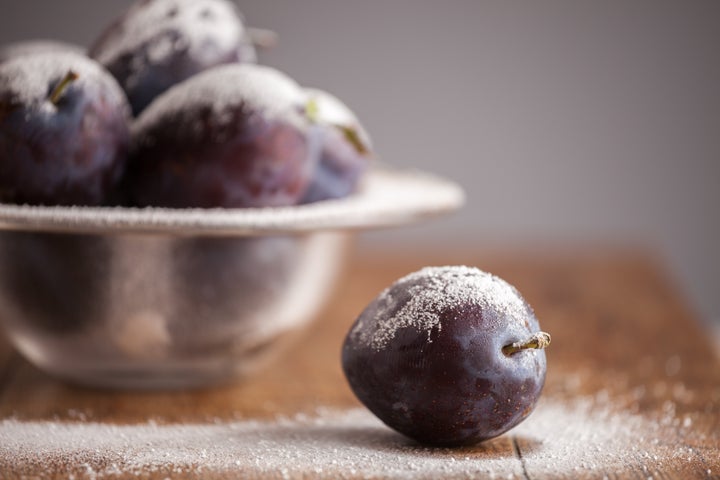
Every Christmas Eve when I was a child, my family would read Clement Clark Moore’s famous 1823 poem, “A Visit from St. Nicholas,” aka “’Twas the Night Before Christmas.” With each reading, one line in particular always captivated me:
The children were nestled all snug in their beds;
While visions of sugar-plums danced in their heads
Maybe it was my sweet tooth or my love for the “Dance of the Sugar Plum Fairy” in “The Nutcracker,” but the line always made me extra exhilarated around the holiday season. I also remember wondering, “What’s a sugar plum?”
It turns out, the term does not refer to some magical fruit invention for a fictional Christmas story, but actually refers to sweet treats in the real world.
“Sugar plum was a sort of general name for candy,” Susan Benjamin, a candy historian and president of True Treats Candy, told HuffPost. “It was first used in Europe, going back to the 17th century.”
Indeed, the Oxford English Dictionary notes that sugar plum was used interchangeably with “comfit,” so it could refer to any sweet involving a seed, nut, piece of spice or other edible bit coated in hard sugar.
“Many of these candies were made using a process called ‘panning,’ where a small slice of fruit, seed or nut was covered in layers of liquid sugar that were poured over it and allowed to harden,” said Beth Kimmerle, food historian and founder of food data company Attribute Analytics.
Panning was a labor-intensive endeavor that required skilled workers to stir with one hand while moving the pan with the other in an attempt to create even layers.
“Once the candy was coated, the confectioner set it aside where it dried for a day or two, then began the process again, stirring and moving, adding layer upon layer,” Benjamin said. “In the last stage, the sugar coating smooth as glass, he often added a flourish of color, mulberry juice or cochineal for red, indigo stone for blue, spinach for green and saffron for yellow.”
The whole process could take days or weeks. Thus, sugar plums were a pricey indulgence generally reserved for those with money and status.
“These sugar-coated bits were no gob-stoppers, but eaten with great decorum,” Benjamin noted. “In the early 1700s, they were given as gifts, particularly the sugar-coated almond with its symbol of joyous beginnings.”
Perhaps because of these high costs, the term took on a non-edible meaning as well.
“The name ‘sugar plum’ appeared in Thomas Decker’s Lanthorne and Candlelight in 1608 but had nothing to do with plums, prunes or any sort of poached fruit,” Benjamin said.
Instead, the term referred to “something very pleasing or agreeable, esp. when given as a sop or bribe,” per the OED.
“Given the cost and time involved in producing them, the sugar plum was also associated with money,” Benjamin said. “If someone was giving a bribe, they were said to be stuffing that person’s mouth with sugar plums. ‘Plum’ was also 18th-century slang for a large amount of money.”
The word “plum” also came to have a similar “pleasing” definition, which gave us phrases like a “plum job.” And to have a “mouth full of sugar plums” was to speak sweet words that were deceitful and insincere.
“Whether sugarplum is one word or two is also very much up for debate,” Kimmerle added.
But do sugar plums (or sugarplums) have anything to do with actual plums? The term has been linked specifically to candied fruits, with some historians pointing to Sir Hugh Plat’s early-17th-century book of recipes and other tips, “Delightes for Ladies.” As the text states, “the most kindly way to preserve plums” is to boil them with juice and sugar. But that link has less broad support.

The connection with the holiday season is clearer, however.
“The association with Christmas is likely due to the value and scarcity and expense of sugar in the past, making it a special treat you might only have once a year,” Kimmerle said.
“Diced candied fruit and sugarplums are used as a key ingredient for traditional holiday fruit cakes,” she added.
In recent years, opportunistic brands have created candies shaped like plums with plum flavoring and marketed them as “sugar plums,” especially around the holiday season. The ice cream company Salt & Straw has even rolled out sugar plum-themed flavors.
“The idea of these brightly colored candies dancing in children’s dreams and imaginations is easy to understand,” Salt & Straw co-founder and head ice cream maker, Tyler Malek, told HuffPost. “We made them a few times in culinary school and, when done right, it feels like magic.”
Fortunately, you don’t have to engage in the meticulous panning process to enjoy a “sugar plum” today.
“I have tried sugar plums, and so has anyone who ever had a Jawbreaker!” Benjamin declared, adding that Lemonheads and Boston Baked Beans also emerged from this panned candy tradition.
“Many of us have tried sugarplums if we go by the ‘small hard sugar candies’ definition,” Kimmerle said. “You don’t have to import fancy treats from Europe.”
